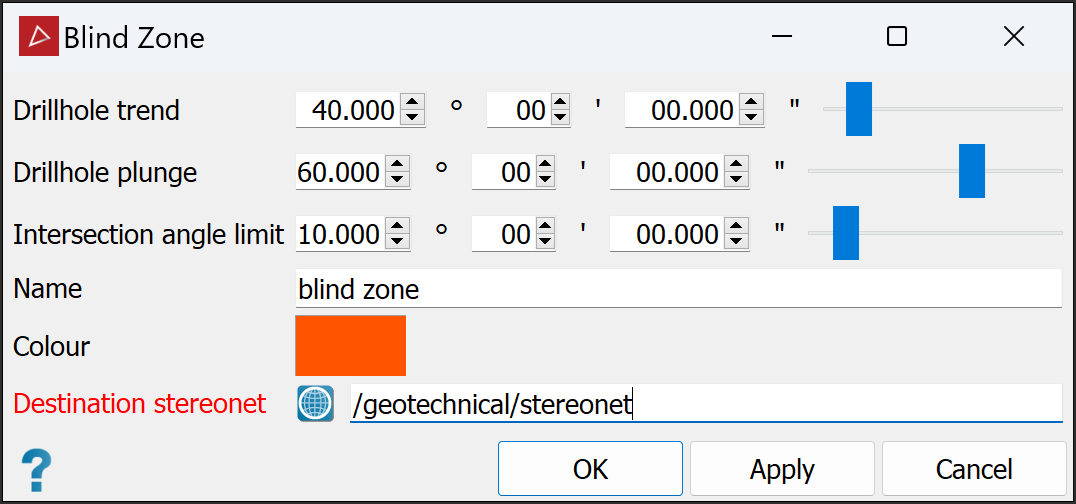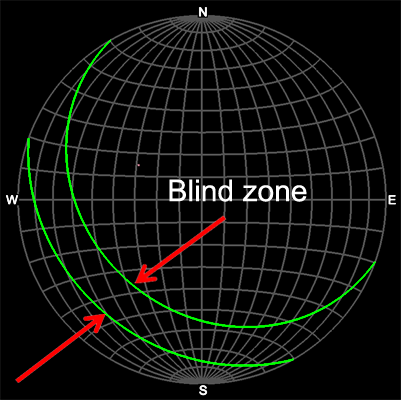Blind Zone
Source file: blind-zone.htm
A blind
zone ![]() on a stereonet represents
the region of trend and plunge of discontinuity poles that
are perpendicular to those of drillholes used
to take samples. That is, the discontinuities line
up with, or are approximately parallel
to, the drillhole. This region
is of interest because any potential discontinuities that line
up with the drillhole are likely to be missed for lack of intersections. Hence
there may be many discontinuities around
the drillhole but no samples in
the drillhole.
on a stereonet represents
the region of trend and plunge of discontinuity poles that
are perpendicular to those of drillholes used
to take samples. That is, the discontinuities line
up with, or are approximately parallel
to, the drillhole. This region
is of interest because any potential discontinuities that line
up with the drillhole are likely to be missed for lack of intersections. Hence
there may be many discontinuities around
the drillhole but no samples in
the drillhole.
To create a blind zone, proceed as follows:
-
View and select the stereonet
 intended to show the blind
zone.
intended to show the blind
zone. -
On the Geotechnical tab, in the Stereonet group, click
 Blind Zone.
Blind Zone. -
Enter the following values into the fields on the Blind Zone panel:
- Drillhole trend: clockwise angle from north (see Glossary > Trend and Plunge)
- Drillhole plunge: angle down from horizontal (see Glossary > Trend and Plunge)
- Intersection angle limit: the angle around the drillhole trend and plunge within which discontinuities are included in the blind zone
- Other information such as a Name, Colour (for the lines surrounding the zone), and Destination stereonet
-
Select OK or Apply to create lines defining the blind zone limits on the stereonet, and stored in the Destination stereonet container.
|
|
|
Example of the region or band of trend and plunge representing a blind zone for a drillhole (drillhole trend = 40°, drillhole plunge = 60°, intersection angle limit = 10°). |
|
|
|
The results are graphically illustrated in the view window. |


